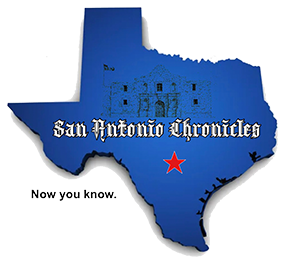As an entire, owners within the Metropolis of San Antonio and Bexar County are getting an estimated $61 million low cost on their property tax payments due to inequitable residence worth assessments, in accordance with a brand new examine.
And the most important breaks are given to high-dollar houses.
Properties of the bottom worth within the County are overtaxed in comparison with houses which can be value extra, in accordance with the Bexar County information evaluation that’s half of a bigger report known as “Economics of Group Improvement” by non-public consulting agency Urban3. The North Carolina-based agency was commissioned by the native H.E. Butt Basis and the San Antonio Board of Realtors (SABOR) to conduct the examine.
In 2023, prosperous and white neighborhoods have been extra prone to get a reduction on their valuations and tax payments whereas decrease earnings and non-white owners have been overvalued and overpaying, mentioned Joe Minicozzi, writer of the examine and founding father of Urban3.
He’ll current his findings at 6 p.m. on Monday through the first installment of the inspiration’s “Everybody Wants a Residence: A Housing Summit Sequence” on the Whitley Occasion Heart.
The sequence is a part of the Know Your Neighbor a program, which convenes studying experiences and neighborhood conversations on financial segregation in San Antonio.
“Our name to motion is studying …. attending to know who your neighbors are and what they’re experiencing — particularly in a metropolis that’s scuffling with many years and many years of financial segregation,” mentioned Patton Dodd, government director of storytelling and communications for the Basis.
Financial segregation “expresses itself in every kind of how — solely considered one of which is housing — however housing is a giant one,” Dodd mentioned.
San Antonio is likely one of the greater than 200 cities that used now-illegal redlining practices within the Nineteen Thirties to forestall non-white individuals from buying houses in neighborhoods deemed “fascinating” whereas devaluing Black and brown neighborhoods.
Urban3’s findings relating to inequitable property tax evaluation in Bexar County echo these present in different jurisdictions throughout the U.S.
“This can be a legacy impact tantamount to redlining that’s designed into the tax system,” Minicozzi mentioned.
“I’m not calling [property tax assessors] racist or classist, I’m simply saying the info is exhibiting that there are race and sophistication variations,” he mentioned.

In comparison with an prosperous zip code in Alamo Heights, “you’re twice as prone to be over-assessed on the South Facet,” Minicozzi mentioned.
The Monday occasion additionally features a 4:30 p.m. presentation known as “Who Owns San Antonio? And The place Did They Go?” throughout which researchers from Group Data Now will current information on the rise of absentee homeownership throughout the town.
Different occasions and workshops within the sequence will likely be scheduled over the approaching weeks and months, Dodd mentioned.
Conversations round sophisticated tax coverage and systemic inequities can usually be riddled with jargon and trigger individuals’s eyes to glaze over, Minicozzi mentioned. He guarantees the other.
“It’s a three-act play once I’m on the market,” he mentioned of his accessible, participating presentation stuffed with visuals.
“What I’m exhibiting you is a few loopy laptop know-how,” Minicozzi mentioned whereas sharing a few of his information visualizations. “These items wasn’t round within the late 1800s when these insurance policies have been written. So now we will really take a look at them. I can present you these [metaphorical] CAT scans and say: ‘Oh, you’ve received spots in your lungs. You would possibly need to give up smoking.’”
‘Flying blind’
Texas is considered one of 13 so known as “non-disclosure” states in the case of actual property costs — which makes information evaluation and residential valuation processes more durable. There is no such thing as a regulation that requires homebuyers or sellers to inform the state authorities, together with appraisal districts, with gross sales worth info.
On the similar time, the structure requires that “all taxation shall be equally in uniform” and state regulation requires that “all taxable property is appraised at its market worth.”
Basically, the appraisal district is required to appraise houses and business property at market worth, however in nondisclosure states, it doesn’t really know the way a lot property is promoting for available in the market.
“In protection of the assessor or your appraiser, it’s like they’re type of flying blind,” Minicozzi mentioned.
For the examine, SABOR supplied aggregated gross sales worth information that allowed the Urban3 group to get a extra correct image, or scan, of the actual property panorama so long as particular person sale costs are stored confidential.
“SABOR is … ensuring that we’re leveraging our information for the advantage of the neighborhood,” mentioned Gilbert Gonzalez, the company’s CEO. “It’s opening it up in a method that we haven’t up to now to make it possible for our neighborhood companions are in a position to do good work to assist initiatives like this.”
As a coverage, SABOR doesn’t present gross sales costs to the appraisal district, Gonzalez mentioned.
“A person can select to reveal that info as they need,” he mentioned. “We, as a company, respect that proper of the people to make that call so we don’t present it.”
Absent that SABOR date, the Bexar Appraisal District makes use of aggregated, neighborhood vast or “mass value determinations,” to find out property values — however it may possibly’t see which particular person property bought for the way a lot, mentioned Rogelio Sandoval, chief appraiser. “No matter these gross sales are indicating — whether or not a rise or lower — that’s going to dictate what the neighborhood does.”
All property house owners have a proper to attraction their valuations, whether or not they enhance, lower or keep the identical year-to-year.
The worth evaluation course of just isn’t discretionary, Sandoval mentioned, “it’s required by regulation. The discretionary half comes within the second a part of the tax invoice calculation, that are the tax charges.”
With regards to inequitable valuations and tax assortment, San Antonio just isn’t the worst within the U.S. or in Texas, Minicozzi mentioned.
Bexar County ranks increased than common in comparison with different jurisdictions throughout the nation, in accordance with a nationwide property tax evaluation out of College of Chicago’s Harris College of Public Coverage.
Whereas the examine doesn’t include coverage suggestions — it’s an evaluation of how the system is functioning now — “I’d argue that the system wants a change … that we have to actually rethink municipal tax methods due to the opacity of the system,” Minicozzi mentioned.
“If I don’t know the way that how the knobs work on the sound board, however I do know I’m getting suggestions,” he added, utilizing one other metaphor. “I’m gonna go discuss to the sound board man and say: What’s occurring, they usually’re gonna inform me which knob to show.
“Why is it we will’t determine this out with our [property] evaluation system?” he mentioned.
Dodd hopes the neighborhood, together with elected officers and advocacy teams, can use Minicozzi’s evaluation to develop insurance policies that shut the property tax hole.
“Rising in consciousness and understanding is the first step,” he mentioned. “There’s every kind of issues that may occur from there.”
Disclosure: The H.E. Butt Basis is a monetary supporter of the San Antonio Report.





